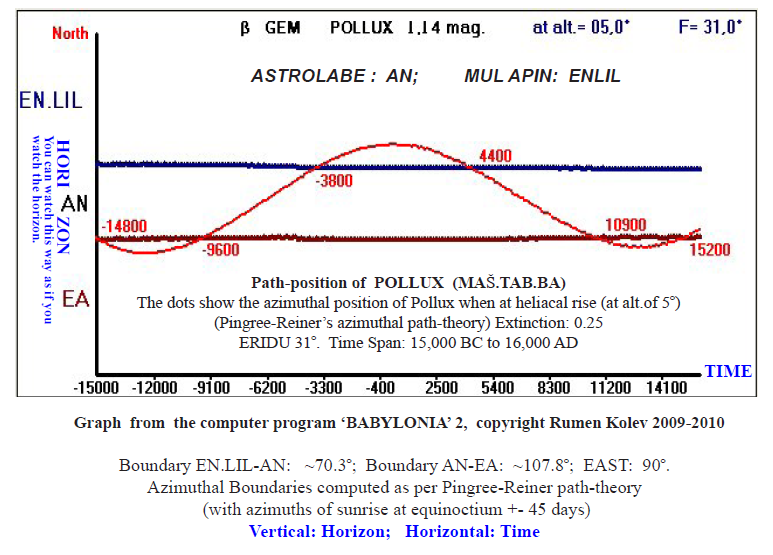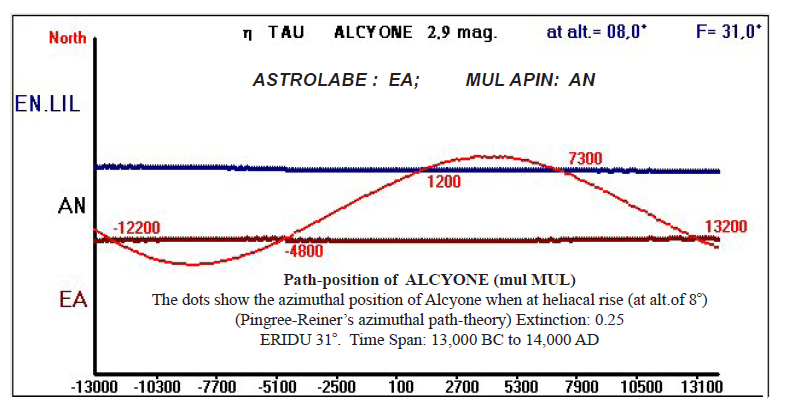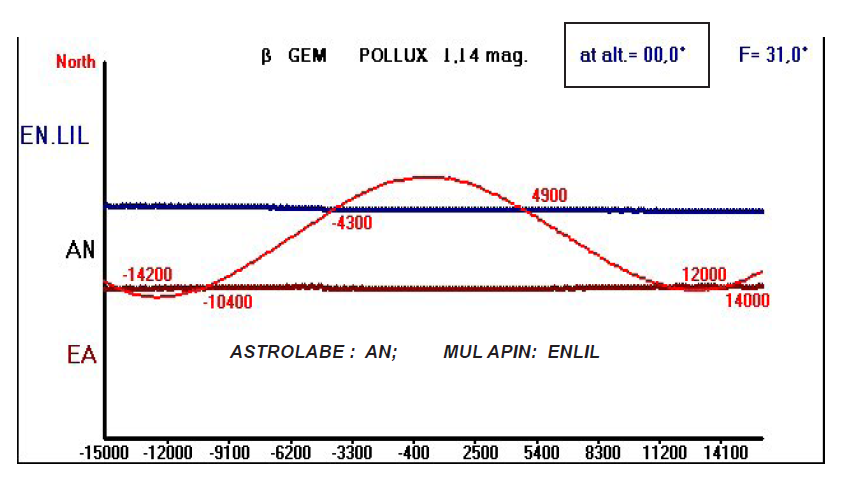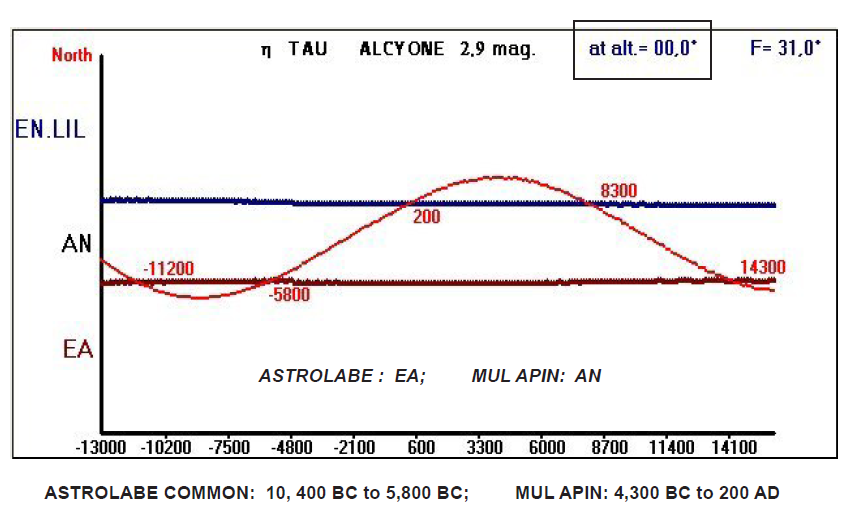The "paths" of mul MUL (Pleiades) and mul MASH-TAB-BA (Pollux-Castor) through the Ages
(Dating of THE BABYLONIAN ASTROLABE and MUL APIN)
by Rumen Kolev
Mul MUL ("constellation Stars") and mul MASH-TAB-BA ("constellation Gemini") are good in several ways. First, their identification is certain. Then, they are very small in area and we do not have to worry about which star to choose in our analysis. (what is eliminated is the-brightest-star-OR-the-first-heliacally-rising-star-OR-the-whole-constellation" controversy). Due to precession, the place over the horizon where these stars rise heliacally, changes. The heliacal rise is the symbolical birth of the star. And the place in the sky where that "birth" occurs, determines the "nationality" of the star, that is, its belonging to Enlil, An or Ea. (Pingree-Reiner theory). Each of these gods rules over a particular part of the sky over a particular section of the horizon called "paths" (boundaries are either azimuthal circles (Pingree-Reiner) or declinational (Kopff-Schaumberger). As we said, because of precession, the place over a fixed horizon where a given star rises, changes. The Pleiades (mul MUL) and Pollux-Castor (mul MASH-TAB-BA) move in and out of all 3 "paths" in one full precessional cycle of 25,000 years. These stars are very "path"-mobile and this is the third good thing about them.

Pollux spends as follows:
EA: 14,800 BC to 9,600 BC
AN: 9,600 BC to 3,800 BC (ASTROLABE)
ENLIL: 3,800 BC to 4,400 AD (MUL APIN)
The astronomical texts in Akkadian known as the "Astrolabe" and "Mul Apin" reveal the "path" of MASH-TAB-BA accordingly.

The Pleiades spend as follows:
EA: 12,200 BC to 4,800 BC (ASTROLABE)
AN: 4,800 BC to 1,200 AD (MUL APIN)
ENLIL: 1,200 AD to 7,300 AD
Now, if we combine both stars and look for the validity of the texts, we will get:
ASTROLABE
POLLUX (AN): 9,600 BC to 3,800 BC
PLEIADES (EA): 12,200 BC to 4,800 BC
ASTROLABE COMMON: 9600 BC to 4,800 BC
MUL APIN
POLLUX (ENLIL): 3,800 BC to 4,400 AD
PLEIADES (AN): 4,800 BC to 1,200 AD
MUL APIN COMMON: 3,800 BC to 1,200 AD
The model shown here is NOTHING but an example for the methodology in my forthcoming article "Astronomical Dating of the Babylonian Astrolabe" (Proceedings of the Melammu VI Symposium).
On the next page are shown the precessional travel of the same stars through the "paths" computed according to the "path"-theory of Kopff-Schaumberger (declinational boundaries). By setting the altitude of the heliacal rise to zero, we, in fact, compute with the declinational theory. The end results are : ASTROLABE COMMON: 10,400 BC to 5,800 BC; MUL APIN: 4,300 BC to 200 AD


URL:
Rumen Kolev: The "paths" of mul MUL (Pleiades) and mul MASH-TAB-BA (Pollux-Castor) through the Ages
http://cura.free.fr/09-10/1003rumen.html
-----------------------
All rights reserved © 2010 Rumen Kolev

Centre Universitaire de Recherche en Astrologie
Web site Designer & Editor: Patrice Guinard
© 1999-2010 Dr. Patrice Guinard